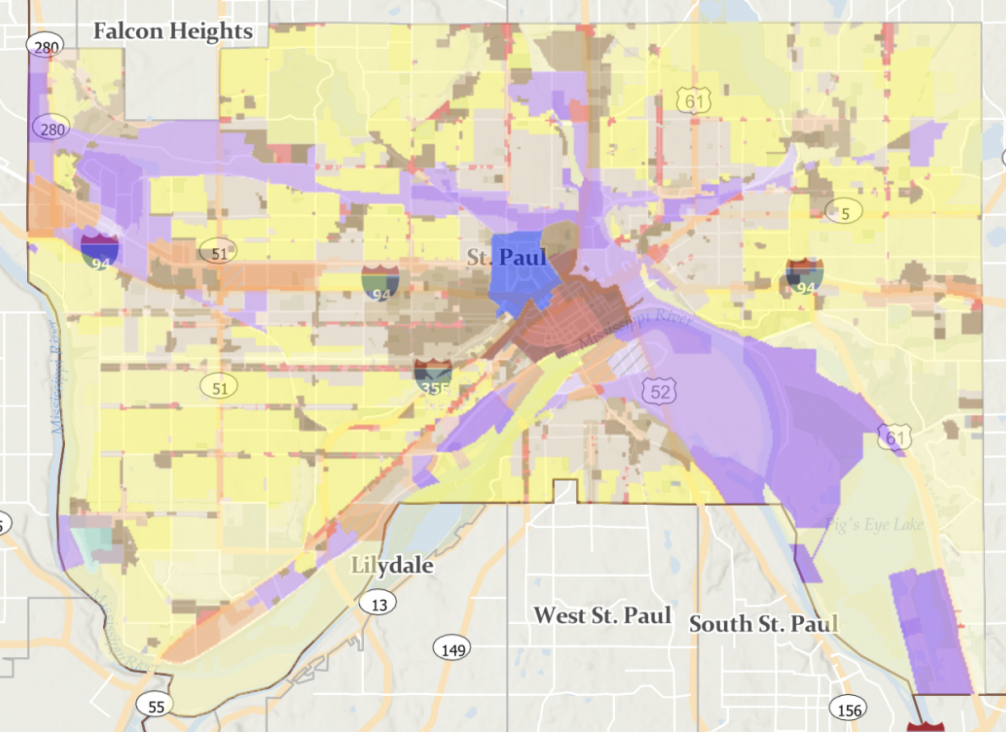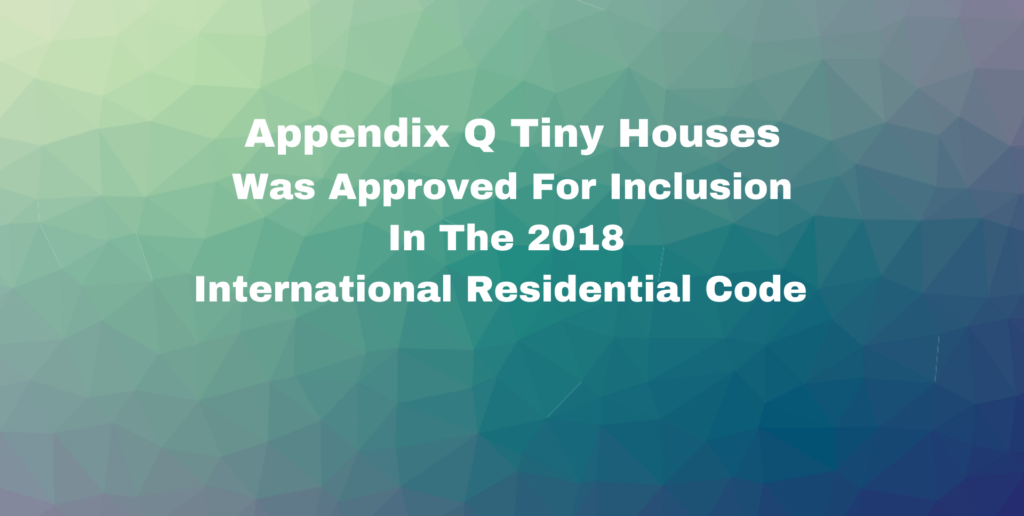ADUs, Tiny Homes, And Smaller Homes Citywide
Source: Matt Privrasty Streets Mn- Jan. 4th. 2022. Next Wednesday, the St. Paul City Council will hear first readings of changes to several of its housing policies that, if enacted, promise to expand the housing supply by making it more feasible to build “tiny homes” and cluster developments in the city.
These changes are coming forward as part of Phase 1 of the city’s 1-4 Unit Study (city staff are already working on the sequel), and this is your own personal policy brief to help you understand why the changes matter, what they actually are, and how they might impact housing in St. Paul.
First, Why Do These Changes Matter?
The shortest answer is that these changes will expand the kinds of housing that can be built in St Paul. For example, if you look at the beautiful sea of yellow (one home allowed per lot) and tan (two homes allowed per lot) in the zoning map below, what you’re actually seeing is very very restrictive local laws. In a neighborhood like Midway, where I live, it’s actually really hard to add homes for those who need them except on the most significant corridors like Snelling or University. And really, every neighborhood in St. Paul is like this. Only a few stretches here and there (recently re-zoned Marshall Avenue where tons of homes are being added, for instance) are really zoned to encourage new neighbors to move in and support our local businesses, send their children to our neighborhood schools, and just generally bring new perspectives to our community.

The longer answer is that these changes are kind of just making options that are technically legal now actually feasible – or at least more feasible. People can technically build Accessory Dwelling Units (ADUs), tiny homes (legally defined as homes 400 square feet and smaller), and other non-traditional small homes (over 400 square feet, etc.); it’s just really weird/hard/nearly impossible to find a project that can jump through the many oddly shaped hoops of current policy. So, why do these changes matter? They’re putting into real life action the housing goals (offering a wide range of housing choices for its diverse residents) that the City of St. Paul has already committed to numerous times.
Second, What Specific Changes Are Being Proposed?
The first set of changes being proposed would update St. Paul’s fairly recent (in zoning code terms) ADU ordinance that was updated to allow ADUs citywide in 2018. The biggest changes are to remove the requirement that an ADU can only be built on a lot where the owner lives in the existing home and the requirement that only lots that are 5000 square feet can host an ADU. Both of these provisions were pretty clearly put in place to very heavily limit the universe of possible ADUs. Many single-family residential lots throughout the city are just smaller than the 5k threshold, for example. So, removing the minimum lot size is pretty darn significant.
And in fact, because the owner occupancy requirement was seen as fairly political, city staff actually did not include removing it in their initial suggested changes for Phase 1. But public comment was strongly and overwhelmingly in favor of removing it and staff updated their recommendation to the Planning Commission to include its removal – which passed slate of proposed changes with only two dissenting votes, forwarding the proposal to the council. This is a huge credit to department staff. It is not easy to recommend something if you think you might get yelled at for it (planning staff basically only gets yelled at, no one has spoken to them in human speaking tones yet this millenia) and it’s even harder to change a recommendation while the policy is already being considered.
Other changes are less flashy but could possibly have even greater impact, such as removing the 22-foot minimum building width in the city’s building design standards. This rule was originally put in place to prevent mobile homes from being sited in the city and also essentially set a minimum building size at 484 square feet. There is also no longer a requirement of only one principle residential building per lot, which will allow cluster developments (more than one residential building on the same lot) in more places and in more circumstances. Think of that random empty lot you’ve walked/biked by that used to have a single home on it. Now imagine it has two or three nice small homes on it instead. That is now not fully bonkers to imagine.

One change that could be viewed as actually increasing regulation on these non-traditional homes is the clarification that any permanent home be built on a foundation. Under current rules for tiny homes (Appendix Q of the state building code), other forms of insulating and protecting utility connections were technically allowed, though never implemented in St. Paul or even Minnesota (that we know of). So the new rules are theoretically more stringent/narrow but may not actually be limiting a real-world option for this climate.
Finally, How Will These Changes impact Housing In St. Paul?
The core impact these changes will have is to widen – even just slightly – the possibility for ADUs, tiny homes, and smaller homes in general to be added throughout residential areas across St. Paul. The changes proposed for Phase 1 have been described by planning staff as the low hanging fruit that staff themselves have already discussed internally multiple times. They aren’t meant to be earth shattering changes. And really, adding one ADU or tiny home here and there was never going to lead to a tidal wave of housing creation immediately – even if these new policies had been in place to begin with.
The point of having a more permissive housing policy in place is that it allows the creativity of families, architects, and housing developers (public, affordable, market) to be unleashed. If 10 families in a neighborhood are legitimately able to add an ADU to their lot thanks to these changes, it won’t just add 10 homes to St Paul, it will provide 10 more examples of how those homes have to be designed, financed, permitted, and sold. It gives city staff 10 more chances to sort through if utilities for a new ADU can be tied into the existing home or if a cluster of three smaller homes can all share utilities to reduce costs. It gives neighbors 10 real life examples to see as they walk to the store that can start to make the concept feel less scary.
Housing is expensive. We need a lot more of it. We need more of it to be affordable. And, aside from waiting to get life changing federal investment in public and affordable housing, we can and should make more creative housing solutions even more possible in St. Paul.
Resources


